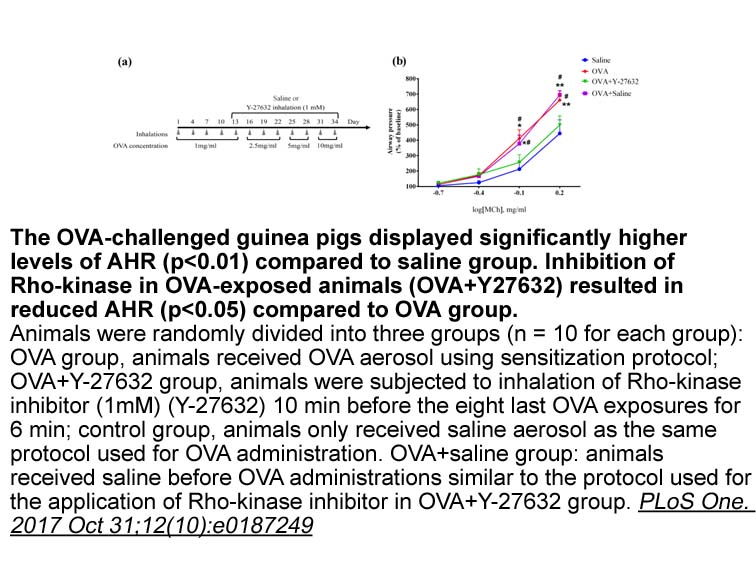Archives
The findings from our previous
The findings from our previous study indicate that mitochondrial biogenesis of astrocytes is increased under experimental septic condition [25]. Recent studies have shown that IL-6 can activate AMPK by increasing the concentration of AMP [26], while AMPK regulates mitochondrial biogenesis and autophagy. Therefore, the purpose of this study was to investigate the effects of IL-6 on mitochondrial biogenesis using astrocytes under experimental septic condition and confirm whether the effects rely on IL-6/AMPK signaling pathway. We prospect that IL-6 enhances mitochondrial biogenesis in septic astrocytes through IL-6/AMPK signaling pathway.
Methods
Results
Discussion
Sepsis is one of the most severe disease and a major cause of death in pediatric intensive care unit (PICU) due to its complicated pathophysiology and lack of target therapy [31]. SAE is a diffuse Nintedanib dysfunction which occurs secondary to sepsis, with an incidence as high as 71% [2]. Septic condition is the host response to infection, characterized by elevated proinflammatory cytokines, increased nitric oxide (NO) and reactive oxygen species (ROS) in the pathological process. Both sepsis and SAE can significantly extend the length of hospitalization of PICU patients and medical treatment. Compared with stimulating astrocytes with LPS alone, co-stimulation of LPS and IFN-γ can activate astrocytes more effectively in order to mimic the septic condition in vitro [27]. First of all, our study showed that co-stimulation with LPS and IFN-γ increased the level of IL-1β, TNF-α and ROS significantly which indicated that sepsis had been initiated.
IL-6 is a classic cytokine mainly produced by astrocytes in central nervous system [32,33]. IL-6 is a double-edged sword that plays both anti-inflammatory and proinflammatory role, regulating various physiological processes, including acute phase response, inflammation and cellular growth [[34], [35], [36]]. Recent report has showed that IL-6 enhanced the survival, self-renewal and tumor initiation potential of cancer stem cells in head and neck squamous cell carcinoma (HNSCC) [37]. By contrast, the anti-IL-6R antibody Tocilizumab (TCZ) mediated reduction in IL-6-IL-6R signaling complexes and decreased the pro-survival effects of IL-6, leading to an increase in the death rates of tumor cells [38]. IL-6 as well as other cytokines like TNF-α, IL-1 and IL-8 increased in sepsis, inflammation and other diseases [16,39]. Mitochondrial biogenesis is mediated by numerous transcription factors. Acting as the master regulator, PGC-1α activates the transcription factors upstream, especially NRF-1 and TFAM, leading to enhanced expression of nuclear DNA encoding proteins associated with mitochondrial biogenesis. Furthermore, these transcription factors activate expression of the five complexes in mitochondrial electron transport chain (ETC) [40], restoring the activity of enzymes in the ETC, and thus, promoting the generation of ATP in response to metabolic stress. Our study firstly demonstrated that IL-6 increased cell viability of astrocytes under septic condition. Transmission electron microscopy analysis also showed that IL-6 attenuated the mitochondrial damage of septic astrocytes and increased the expressions of multiple proteins associated with mitochondrial biogenesis, including PGC-1α, NRF-1 and TFAM and then increased mitochondrial biogenesis. Moreover, we found that the level of ATP was increased after incubated with IL-6, possibly because of restored mitochondrial ultrastructure and the elevated mtDNA content and mitochondrial volume density. IL-6 might work by upregulating the expression of p-AMPK and activating the IL-6/AMPK signaling pathway.
As a ubiquitous sensor of cellular energy sensor highly expressed in the brain, AMPK is activated by the increase in AMP/ATP or ADP/ATP ratios, therefore enhances the expression of PGC-1α, which initiates the PGC-1α/NRF/TFAM pathway, resulting in the synthesis of mtDNA and proteins and generation of new mitochondria [3,[41], [42], [43], [44], [45]]. The current study illustrated that while blocking IL-6/AMPK signaling pathway, the protective effect of IL-6 has been diminished. We found that there was a sharp decline in the expression of PGC-1α, NRF-1 and TFAM after blocking IL-6/AMPK signaling pathway. What's worse, the mtDNA content and mitochondrial volume density decreased significantly, and thus, lead to a decrease in the level of ATP, which is the direct energ y provider. Ultimately, C group, siRNA group and siRNA+C group suffered the much more serious and more extensive damage of mitochondrial ultrastructure, resulting in a lower cell viability of astrocytes, especially when inhibiting IL-6R and AMPK simultaneously. The present study demonstrated that IL-6 enhances mitochondrial biogenesis by upregulating the expression of p-AMPK and activating the IL-6/AMPK signaling pathway.
y provider. Ultimately, C group, siRNA group and siRNA+C group suffered the much more serious and more extensive damage of mitochondrial ultrastructure, resulting in a lower cell viability of astrocytes, especially when inhibiting IL-6R and AMPK simultaneously. The present study demonstrated that IL-6 enhances mitochondrial biogenesis by upregulating the expression of p-AMPK and activating the IL-6/AMPK signaling pathway.